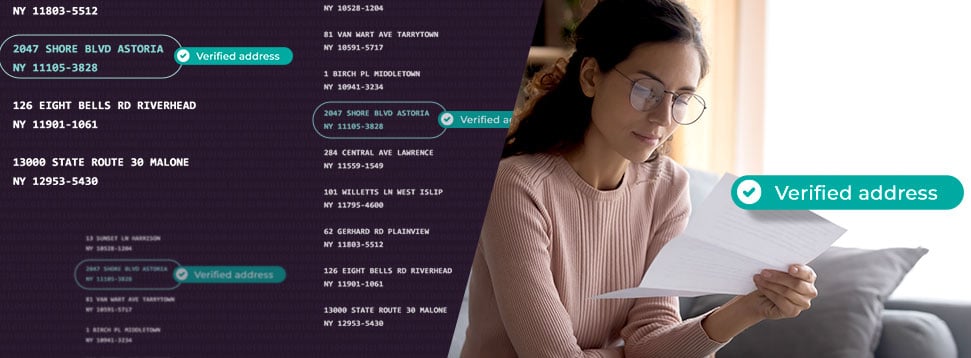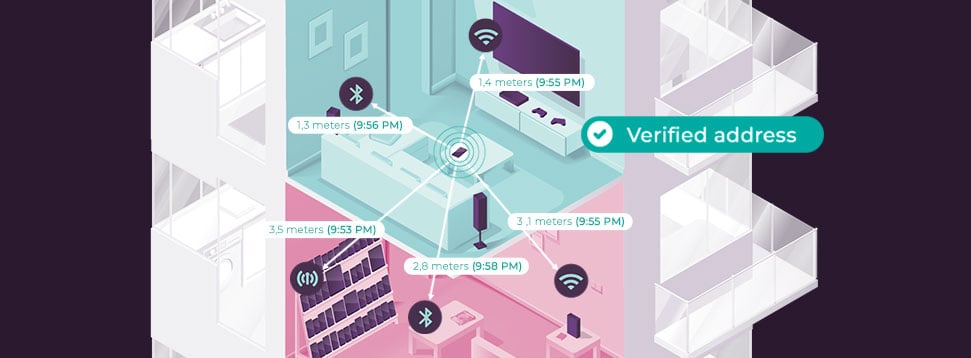Several challenges are associated with the market address validation services currently available. The main one is that most of these services call out third-party databases, which are often incomplete or outdated. Below are a few different types of address validation services and the critical challenges that each faces.
Address Validation Databases
These services were built to verify that the address submitted is a valid mailing address within the national post office database (i.e. the USPS). The main challenges associated with these databases include:
-
Coverage: These databases have good coverage in some countries (such as the US and UK) but may provide incomplete information in other countries without a robust postal address database. That means it can be challenging for global companies to rely exclusively on these services.
-
Resources: International address validation done in this way may require companies to implement APIs from different vendors in each country, making it both very expensive and incredibly resource-intensive. Customers who only onboard domestic users may succeed with this method, but most platforms will need a more reliable, globally-minded solution.
-
Recency: Even when used in the US and UK, where postal address databases are available, these databases may not be updated frequently enough to deliver the expected coverage rate.
Proof of Residence Databases
These services, including the DMV and other state-by-state databases, try to verify whether the user is currently living or has previously lived at the submitted address. They are limited in scope and often can only verify addresses in a particular region of the US. Additionally, they tend to have low coverage of younger generations, like Z and Alpha, and immigrants who may not own a car or a home. And because these database checks involve multiple governmental agencies, the “cost per verification” is high compared to other solutions.
Reverse lookup databases
In this scenario, users are verified against phone number directories and Mobile Network Operator (MNO) contract databases. After the user's phone number is collected, it is used to look up the address associated with the number. However, challenges arise when old contracts return outdated address information. The user's personal information is unlikely to be updated when the user moves or changes the carrier network.
Utility bill
A digital copy of a recent utility bill is also used as proof of address. However, asking a new user to submit a document scan introduces friction in the onboarding process. The user must locate the physical document, scan it clearly, and finally upload and submit it. These multiple steps contribute to high drop-off rates. Additionally, while OCR can extract information from these forms, these technologies are not always reliable when dealing with various billing formats. For this reason, documents may require a manual review, raising costs and significantly slowing down the process. Due to technological advances, utility bills are considered a “last resort” address verification service.
Real-time address verification
This novel address verification approach leverages real-time signals from a user's mobile phone, including GPS and WiFi, to determine if the user is currently at the stated address. To gain access to these signals, the company must first obtain location permissions from the user, which introduces an additional step. These solutions provide several advantages:
- it checks the real physical presence of the user at the provided address and not the presence of the address in a database.
- It works globally in every country: it does not depend on the existence or completeness of different address databases in each country
- It can detect fraudsters that can fool the address database services. For example, if a hacker in Russia steals the PII of a US consumer and tries to impersonate him/her, he will use and submit his/her US address. Since it’s the correct address for that specific consumer, this address will be verified by the database service but will be flagged as fraud by the real-time address verification. This service will see a mismatch between the physical user location (Russia) and the stated user location (US).
Mail a physical postcard
Though it may seem archaic, companies today verify addresses by sending a physical piece of mail containing a code that the user is asked to provide during the online onboarding flow. This can take between three and five business days to reach domestic addresses and over a week for addresses overseas. This delay causes drop-off and is one of the more expensive address verification options.
Given that no solution is a silver bullet, companies typically structure a vendor waterfall to ensure that they successfully onboard as many new users are possible. The most efficient way to structure this waterfall is to first place the service with the highest success rate and lowest friction, ensuring that it verifies the possible users. While the last position is reserved for the highest friction and most expensive solution, guaranteeing that all other options are exhausted before turning to the last resort. Using this waterfall strategy, companies optimize for coverage and cost.



